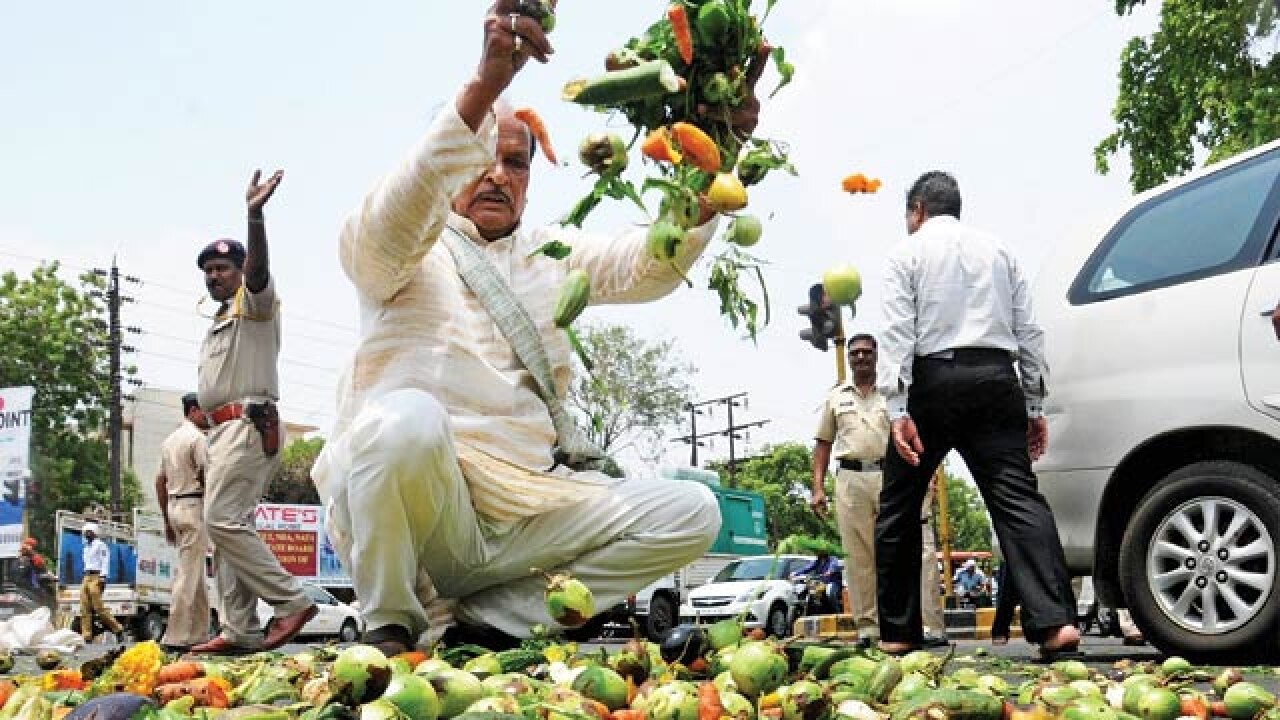
Union Urban Development Minister M Venkaiah Naidu recently said that farm loan waivers have become a fashion. He also said that the government has to take care of farmers, almost in the same breath.
Indeed, farm loan waivers have become a fashion now with states like Andhra Pradesh, Telangana, Uttar Pradesh, Maharashtra, and, most recently, Punjab waiving off farm loans. Further, there is a demand for farm loan waivers from more states. It is more than likely that many more states will waive off farm loans in the months to come.
An estimate made by Bank of America Merrill Lynch puts the total cost of farm loan waivers at Rs 2,57,000 crore. Of course, someone will have to foot this bill.
When state governments waive off farm loans they need to compensate the banks for it. The question is how does the state finance this? There are four ways to do it: a) cut down on other expenditure in order to fund the waive-offs; b) raise more revenues; c) borrow more; and d) a combination of these three methods.
If a state decides to cut down on investment, chances are it will end up cutting public investment, simply because regular expenditure, like payment of salaries, cannot be cut. Hence, growth-creating public investment will have to face the axe.
State governments can also raise money through revenues. Maharashtra Chief Minister Devendra Fadnavis has talked about monetising state government land and increasing lease rent. This will have to be done quickly to fund the loan waiver. And governments, as we all know, are not known to move quickly.
Also, it needs to be pointed out here that in Maharashtra, a drought cess of Rs 9 is paid every time a litre of petrol is bought, even at a time when the state is not facing a drought. This shows that the state government is already finding it difficult to meet its expenditure.
The third option is borrowing more in order to repay the banks. State governments often borrow more when they spend more. This pushes up the fiscal deficit. Fiscal deficit is the difference between what it earns and what it spends.
While the fiscal deficit of the Central government has been under control, that of the state governments has gone up over the years. In absolute terms, between 2010-2011 and 2016-2017, the combined fiscal deficit of all state governments has gone up by 182 per cent. In comparison, the fiscal deficit of the central government went up only by 43 per cent during that period.
Hence, the fiscal deficit of state governments has been a worry over the last few years. The farm loan waivers will only add to it. When governments borrow more, they crowd out private borrowers with higher interest rates. So, someone somewhere will bear the cost of the waive-off, but as this cost is difficult to calculate it is not in the public domain.
The Central government is not helping the state governments with these waivers. Nevertheless, this will push up the combined fiscal deficit of state governments and the Central government, and that isn’t good. Further, the bonds through which state governments borrow are issued by the Reserve Bank of India, and, hence, have an implicit guarantee of the central government.
Also, any waive-off spoils the credit culture. With these, the farmers will expect a waiver for the next round of farm loans as well. In fact, in Maharashtra, they are already asking the government to waive off their electricity bills. Also, those who haven’t defaulted on their loans want the government to increase their compensation to Rs 50,000 from the current Rs 25,000.
The bigger question is will waive-offs help the farmers? In the short term yes. But it doesn’t help in tackling the structural problems in Indian agriculture.
The plot sizes in Indian agriculture, as they have been divided over the generations, have become too small for agriculture to be viable in many cases. With the horticulture produce (fruits, vegetables, flowers, spices, etc) now being greater than food grains, farmers need access to better storage systems, which is currently missing.
With the government buying only rice and wheat (and now pulses) at the minimum support price, a market mechanism for buying and selling of agriculture produce has never really developed in India.
These are the bigger issues which the government needs to think through and address. But sadly, the incentives of the politicians are aligned towards the short term, given that elections happen every five years. And so, farm loan waivers are the easy way out.
The writer is the author of India’s Big Government — The Intrusive State and How It is Hurting Us